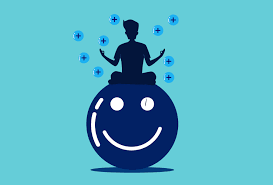Contents
Introduction
In today’s fast-paced world, Harmonizing Performance is a key metric in nearly every aspect of life—whether in business, sports, arts, or personal development. However, achieving peak performance isn’t just about pushing harder; it’s about harmonizing different elements to create sustainable success.
Harmonizing performance means striking the right balance between efficiency, quality, and well-being. It’s about optimizing output without burning out, maintaining high standards without sacrificing mental health, and fostering growth while staying adaptable.
This article explores the concept of harmonized performance, its importance, and practical strategies to achieve it in various domains.
The Three Pillars of Harmonized Performance
To truly harmonize performance, three core pillars must be balanced:
1. Efficiency: Doing Things Right Harmonizing Performance
Efficiency is about maximizing output with minimal wasted effort. It involves streamlining processes, leveraging technology, and eliminating redundancies. However, efficiency alone isn’t enough—doing things quickly doesn’t always mean doing them well.
Key Strategies for Efficiency:
- Automation & Tools: Use software and AI to handle repetitive tasks (e.g., project management tools like Asana or Trello).
- Time Management: Techniques like the Pomodoro Technique or time-blocking can enhance focus.
- Lean Principles: Eliminate unnecessary steps in workflows to reduce waste.
2. Quality: Doing the Right Things Harmonizing Performance
Performance isn’t just about speed—it’s about value. Quality ensures that the output meets or exceeds expectations. Whether it’s a product, service, or personal skill, excellence should never be compromised for speed.
Key Strategies for Quality:
- Continuous Improvement (Kaizen): Regularly refine processes and skills.
- Feedback Loops: Seek constructive criticism to identify areas for growth.
- Attention to Detail: Small refinements can lead to significant improvements.
3. Well-being: Sustaining Performance Long-Term
Burnout is the enemy of performance. True harmonization requires physical, mental, and emotional health. Without well-being, efficiency and quality decline over time.
Key Strategies for Well-being:
- Work-Life Balance: Set boundaries between professional and personal time.
- Mindfulness & Recovery: Practices like meditation, exercise, and adequate sleep enhance cognitive function.
- Purpose & Motivation: Align tasks with personal or organizational values to maintain engagement.
Applications of Harmonizing Performance
1. In the Workplace
Companies that Harmonizing Performance see higher employee satisfaction, lower turnover, and better productivity. Google’s “20% time” policy, where employees spend a portion of their workweek on passion projects, is a great example of balancing efficiency, creativity, and well-being.
2. In Sports
Elite athletes don’t just train harder—they train smarter. Recovery, nutrition, and mental conditioning are as crucial as physical drills. The concept of periodization (structured training and rest phases) ensures peak performance without overtraining.
3. In Personal Development
Self-improvement isn’t about relentless hustle. Harmonized performance means setting realistic goals, celebrating progress, and allowing time for rest. Techniques like habit stacking (adding new habits to existing routines) can help maintain consistency without overwhelm.
Challenges in Harmonizing Performance
Despite its benefits, achieving balance isn’t easy. Common obstacles include:
- Overemphasis on Short-Term Gains: Sacrificing long-term health for immediate results.
- Perfectionism: Striving for flawless output can slow progress and increase stress.
- External Pressures: Societal or corporate expectations may push individuals toward unsustainable practices.
Overcoming These Challenges
- Set Realistic Expectations: Aim for progress, not perfection.
- Delegate & Collaborate: Share responsibilities to avoid burnout.
- Measure Holistically: Track not just output, but energy levels and satisfaction.
Conclusion: The Symphony of Success : Harmonizing Performance
Harmonizing performance is like conducting an orchestra—every element must work in sync. Efficiency, quality, and well-being must complement each other rather than compete.
By adopting a balanced approach, individuals and organizations can achieve sustainable excellence—performing at their best without sacrificing health or happiness.
Final Thought
“Performance isn’t a sprint or a marathon—it’s a dance. The key is moving with rhythm, grace, and endurance.”
Would you like additional insights on implementing these strategies in a specific area, such as leadership or creative work? Let me know how I can refine this further!
